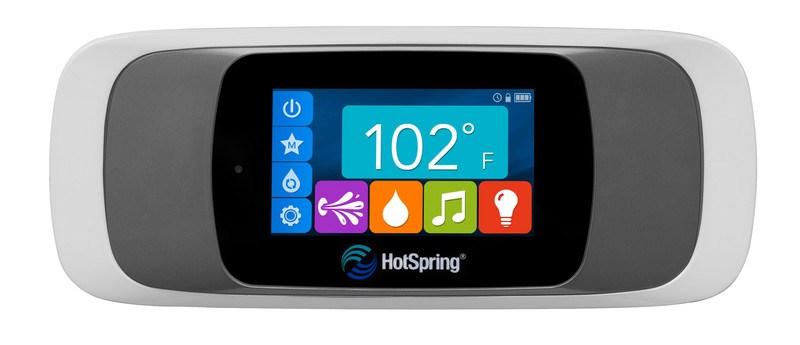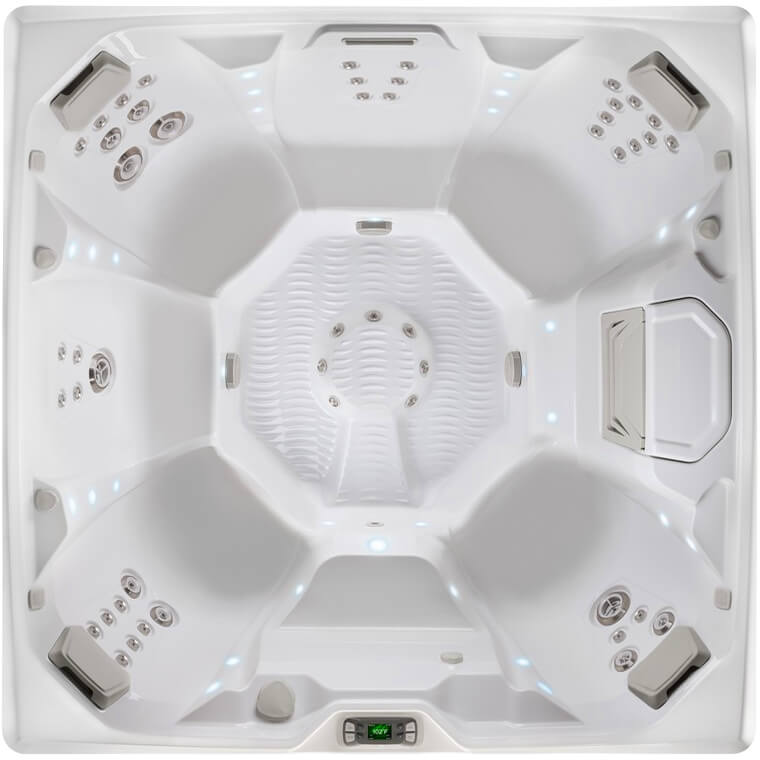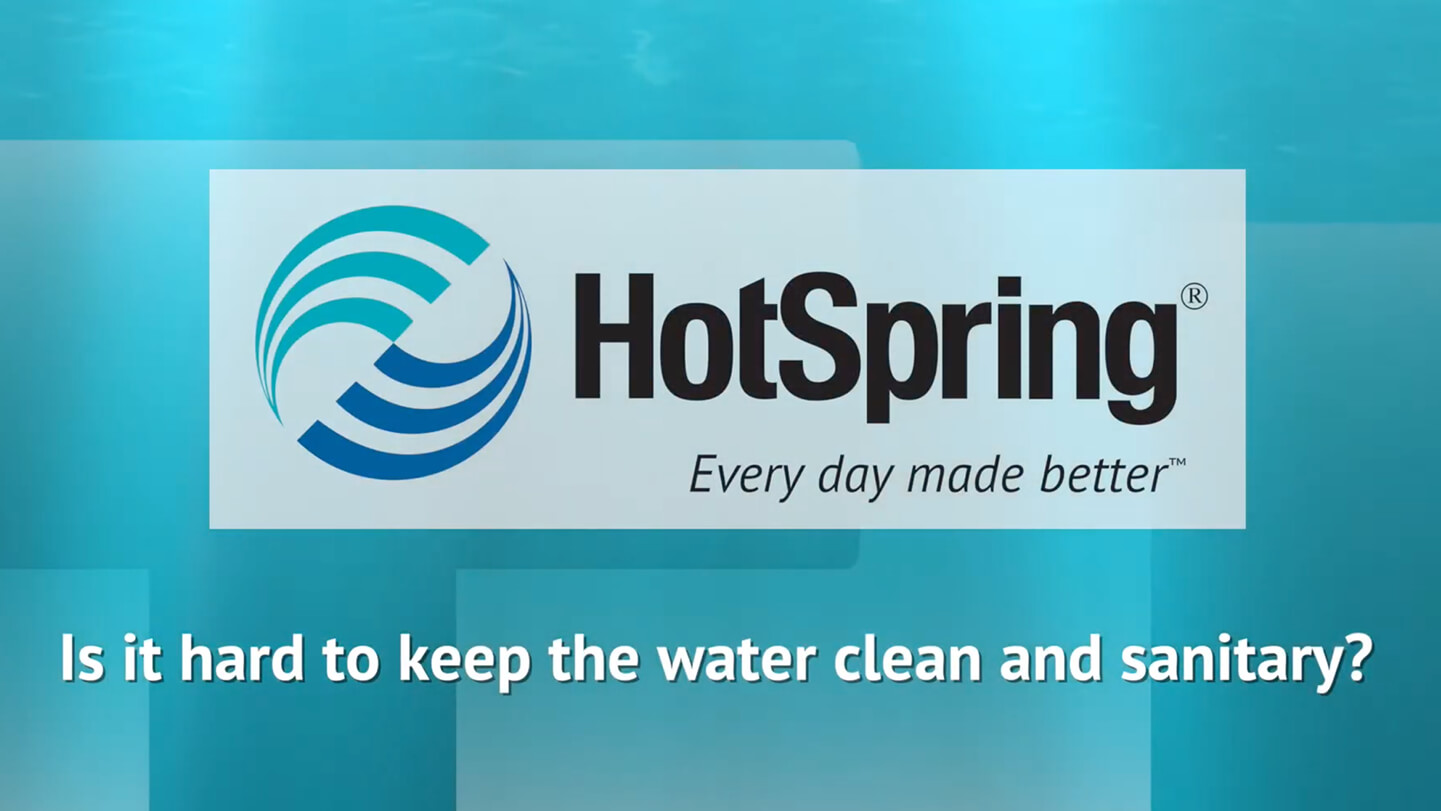
Let's get down to the brass tacks of buying a hot tub. Sure, it feels great to soak in a beautiful hot tub, but your final purchasing decision shouldn't depend solely on what feels great or what looks nice. Your choice should be based on clear facts, hard statistics, and answers to a few simple questions. For example, what's your budget? What returns on your investment do you seek-more family time, better health, pain relief, or all three? How do your hot tub choices compare to one another?
To help you answer these questions and begin your comparison shopping, let's look at some all-important hot tub details.

READING HOT TUB SPECIFICATIONS
When thinking about buying a hot tub, it's important to consider the models that speak to both your budget and needs. What seems like a great deal at first, might not really be a bargain at all when you factor in everything you want from your spa. So, shop wisely, beginning with a review of the hot tub's specifications. Most manufacturers list the specifications of each model right on their website, allowing for easy comparison. But only if you know how to interpret that information will you make the smartest decision for you and your family.
Here are the specifications for the Hot Spring Grandee®, one of our popular top-of-the-line models:
| Hot Spring Grandee® Specs | |
|---|---|
| Seats | 7 |
| Dimensions | 8'4" x 7'7" x 38" |
| Total Jets | 43 |
| Water Capacity | 450 gallons |
| Pumps | Wavemaster 9200: two-speed, 2.5 continuous-duty HP. Wavemaster 9000: one-speed, 2.5 continuous-duty HP |
| Wattage | 230 volts at 50 amps. |
| Heater | No-Fault® 4000-watt 230-volt heater. |
Let's take a quick look at what these specs mean and how to use them to compare model choices.

Seats: The more seats in your hot tub, the more friends and family can enjoy it with you. The Grandee has seven seats-plenty for most people. To determine the number of seats right for you, think not only about who'll use your hot tub every day, but also how often you'll invite others for a soak. If there are four people in your family, and you entertain guests on weekends, you'll want a hot tub that will accommodate everyone. Hot tub prices can rise with the seat number, however, so keep that in mind.

Dimensions: The dimensions of your hot tub should be considered in conjunction with the number of seats. For example, compare the Hot Spring Vanguard® to the Hot Spring Aria®. Both have the same dimensions, but the Vanguard has six seats compared to the Aria, which has five. So, while each will accommodate a number of people, the Aria will feel more spacious. Also, while length and width are important to your decision-making process, height is essential. The shorter your hot tub, the less you'll be able to immerse in the water if you are tall.

Jets: When it comes to jets, more doesn't always mean better. Jet positioning and design, both of which benefit your hydromassage experience, are more important than the number of jets. Just remember that the more jets you have, the more pressure the pumps need to supply. So, you'll need to consider pump power as well (more on that below). Jet design also plays an important role in pressure delivery and your ultimate experience. Think of the difference in pressure delivery when you use a garden hose with a nozzle to wash your car or water your garden versus simply putting your thumb over the end of the hose. Ask your dealer to describe the specific details.

Water Capacity: Water capacity is determined by the size of the hot tub-the larger the spa, the more gallons it holds. This number is crucial to determining how long it will take to drain and refill your hot tub, and how much it might cost. The Grandee hold 450 gallons, which is on the high side of water capacity.

Pumps: Your pumps determine the pressure behind your jets. Pressure is critical when counting on your hot tub for pain relief and better health. The Grandee pumps deliver 4.5 continuous-duty horsepower, which is more than enough to provide strong pressure to each of its 43 jets. In fact, that's nearly 10.5% of one horsepower per jet. When looking at other hot tubs, use this as a baseline for comparison.

Wattage: Wattage is determined by multiplying volts by amps. To understand what these numbers mean for your hot tub, picture water running through a pipe. Volts roughly correspond to PSI (pounds per square inch)-the amount of pressure forcing the water through the pipe. Amps roughly correspond to GPM (gallons per minute), or the amount of water delivered through the pipe. The higher the wattage, the greater electricity is required. But high wattage also influences performance-the higher the number, the more efficiently your hot tub will heat. If your hot tub only requires 110 volts, you can plug it directly into a standard home outlet; if it requires 220 volts or more, you will need to install an appropriate outlet. Your dealer will be able to explain what that entails.

Heater: Your hot tub heater has one job-to heat the water. A high-voltage spa takes more energy to run than a low-voltage spa, but it won't need to run as long to heat the water to your ideal temperature. Less powerful heaters will work more and work harder, so always factor in how often you plan to use your spa when comparing models.
Now that you understand hot tub specifications, you're one step closer to comparing your choices online or at a dealer. There's still more to know, however, especially about hot tub ownership, maintenance, benefits, and safety.

HOT TUB STATISTICS

There are roughly 5.8 million hot tubs in U.S. households today, which is not a huge surprise given that a high-quality hot tub can last 20 years or more. Most of these hot tubs belong to families in single-family detached residences, although a few exist in condominiums and apartments. The most common type of hot tub is an above-ground spa with an acrylic shell. Above-ground hot tubs sit on level pads and are often surrounded by a wood or synthetic cabinet.
Additional statistics below will paint a picture of what you can expect as a hot tub owner in terms of purchase price, average installation and operation costs, benefits, and safety. Let's jump right in!
HOT TUB COST STATISTICS
Hot Tub Price Range by Tier

- Luxury hot tubs: $13,000 — and up
- Premium hot tubs: $11,000 — and up
- Value-priced hot tubs: $7,000 — and up
- Entry-level hot tubs: $4,000 — and up
Average Installation Costs.

The average cost to install a hot tub in the U.S. is $318, with a range from $157 to $490. Installation cost depends on hot tub location and size, and complexity of the installation. Installing a hot tub on a concrete pad in a suburban backyard with easy access is routine. If your installation is more involved, such as if a crane is needed to lift your hot tub to your rooftop deck, the cost will rise.
Average Monthly Electricity Cost

Hot tubs typically cost around $10 to $20 per month to run. But there are a few variables to consider. Hot tubs are more expensive to heat in the winter than the summer, and larger hot tubs cost more to heat than smaller ones. The more you use your hot tub, the more heat you'll lose to ambient air, requiring your heater to use more energy. Owning a modern energy-efficient hot tub with improved insulation and powerful heaters can contain these costs. To get an estimate of the electricity costs for a specific model, use our energy efficiency calculator.
Average Water Care Cost

The basic level of hot tub water care (using bottled chemicals) costs around $20 per month. Upgrading to a water care system will raise the cost slightly but reduce the need for chlorine and save you time on water maintenance. Top-tier saltwater systems, such as our FreshWater® Salt System, creates water cleaners from salt, also reducing the need for chemical additives. These systems cost more up front, but can significantly reduce monthly costs and water maintenance time.
HOT TUB BENEFITS

Better Sleep: According to the National Sleep Foundation, around 132 million Americans suffer from some type of sleep disorder at least one night per week. If you have trouble sleeping, your hot tub can help. A 15-minute soak about 90 minutes before you go to bed will cause a drop in body temperature as you cool down, helping to ease you into a deep, relaxing slumber.
Improved Mobility: As you relax in your hot tub, your body presses against the warm water. As it does, the water presses back, lifting you. The buoyancy of spas has been found to help provide temporary alleviation of symptoms of arthritis, including swelling, pain, stiffness, and aid in joint motion and function. While soaking in a spa is recommended for many arthritis sufferers, it is not for everyone. Always consult your physician for health advice.
Deeper Social Connections. Your hot tub will quickly become a place to gather with family and friends, and nurture those relationships. Spending quality time together, conversing or just relaxing far away from technology and the pressures of work can become a welcome routine enjoyed by all.
HOT TUB SAFETY FACTS

Recommended Temperature. According to the U.S. Consumer Product Safety Commission, the water in your hot tub should not exceed 104 degrees Fahrenheit, and the recommended temperature is 100 degrees. Special care should be taken with young children.
Safe Age for Children. The U.S. Centers for Disease Control and Prevention recommends that children less than five years old not be permitted inside a hot tub.
With these facts and stats in hand, you're now prepared to browse models online or visit a local dealer to ask the right questions and choose a hot tub that's perfect for you.
Hot Spring Spas is one of the oldest hot tub brands in the United States, we're proud of our hot tub expertise. We're also happy to share with you the insights that inform every aspect of our world-class hot tub designs. To learn more, download our brochure, visit your local dealer, or request a quote.